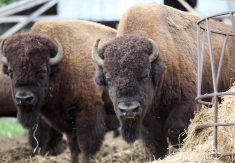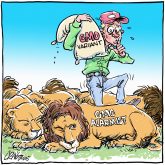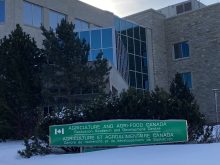This is definitely not the column I had planned for this week.
With so much going on – two crucial federal byelections at different ends of the country, job action by teachers in Saskatchewan, the first ministers meeting to talk about health care – another farm safety column didn’t seem that enticing.
Then, driving home at dusk last night, the topic took on a degree of urgency.
Facing into the sun, I began the drive down a steep coulee hill.
On the other side of the coulee, silhouetted against the horizon, was a combine. It was moving away from me, and as I came over the hill on the other side, I could see it ahead of me. Barely.
Read Also

High prices see cow-calf producers rushing to incorporate
Farm accountants are reporting a steady stream of cow-calf producers rushing to get their operations incorporated ahead of selling their calves this fall.
It had two small lights on the back, but none on the table, which was sticking out some way on either side and that I knew for sure was there because I had seen it in silhouette.
In the dusk, with the sun in my eyes, and with no lights on it, I could barely make it out. Approaching closer, I saw something I hadn’t been able to see before: a dark-colored half-ton following the combine. There were no lights on the truck.
Dusk is one of the most dangerous times of all to be out on any road.
It isn’t dark yet, but it isn’t full daylight either. Many people think, because it isn’t dark, they don’t need lights.
How wrong they are.
Driving behind those two vehicles, my mind went back almost 20 years when my family learned first-hand the meaning of farm safety and why all vehicles traveling at dusk should be well-marked with flags and lights.
Some of my readers may have seen an article by my daughter, Bronwen, which was published in the Canfarmsafe supplement recently delivered with this paper.
She wrote of an accident that happened when she was five years old “heading home along a grid road at dusk.”
She said, “a dark-colored truck towing a swather was parked on the opposite side of the road. There were no signs or flashers on the equipment. My father doesn’t remember the accident and my mother says she didn’t see the blades of the swather until they were coming across the hood of our car.
“I don’t remember the accident either; I only remember waking up in a field screaming.”
Today, she said, she still has a scar on her head and she has to comb her hair a certain way to cover it. But she “can now look at the spot where the accident happened without shaking” and no longer panics when she sees farm equipment being towed down the road.
“I do still wish, though, that the farmer had taken a few moments to put flashers on his swather,” she said.
So do I.














